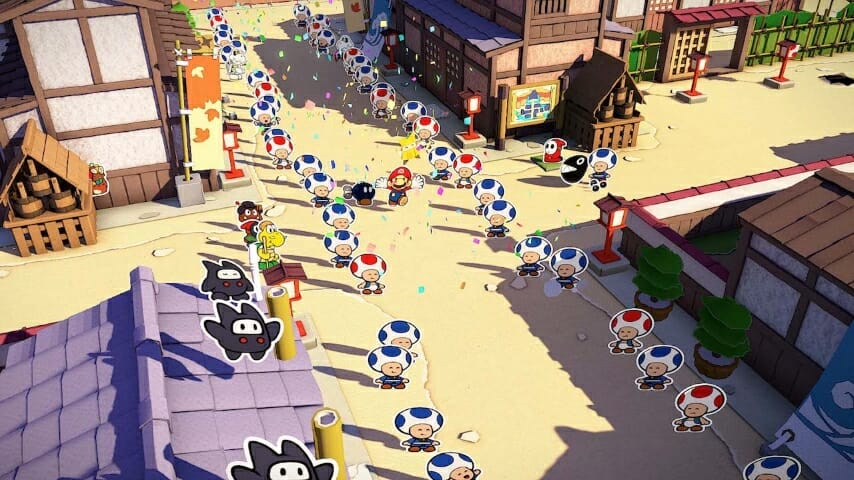Here’s What You Need to Know about Paper Mario: The Origami King

Paper Mario: The Origami King is Nintendo’s latest major release for the Switch, and Paper Mario fans around the world are jazzed to pop back into this weird offshoot of the most famous game series of all time. If you’re one of the many people who snapped up a Switch during quarantine to play Animal Crossing or Ring Fit Adventure, and have no idea what this Paper Mario business is all about, fear not: here’s some info to help you decide if The Origami King should be the next game on your pandemic playlist.
The most important thing you need to know about Paper Mario is that it’s nothing like the Mario games you’re probably familiar with. It stars Mario, Peach and Bowser, but instead of a fast-paced platformer, it’s a slow, deliberate adventure. At its heart, it’s a role-playing game, broadly similar in style (but not in any way in execution) to games like Final Fantasy and Pokemon. That means it’s focused more on story and exploring than real-time action, and requires more of a commitment of both time and attention than Super Mario platformers. If you don’t like games that are slower, more methodical, and require talking to characters and searching for specific items, you might want to steer clear of this one. If you aren’t inherently opposed to that kind of stuff, though, you’ll hopefully find Origami King to be a fun, charming, legitimately funny adventure, much like the Paper Mario games that came before it.
How did Paper Mario get here, you ask? The Mario universe is a sprawling, tangled mess of spinoffs and spinoffs of spinoffs, landing on almost every possible game genre at one time or another. Paper Mario’s provenance is a good example of how knotted this history can get. The original Paper Mario, which came out in 2000, started as an official numbered sequel to 1996’s Super Mario RPG: Legend of the Seven Stars, but during development was given a new name that wound up spawning what is effectively a separate Mario series. Super Mario RPG then gave birth to a second long-running spinoff in 2003, the Mario & Luigi series of handheld games. There’s never been a Super Mario RPG 2, but at this point there’s been five Mario & Luigi games and, with the release of The Origami King, six Paper Mario games, making this little cluster of loosely related role-playing games one of the leafier branches on the Mario tree.

The reason we can classify Paper Mario as its own standalone series, distinct from the Mario & Luigi games, is right there in the title. The major conceit behind Paper Mario is that, for whatever reason, Mario and his familiar friends and enemies from the Mushroom Kingdom are all two-dimensional paper cutouts. This isn’t just an aesthetic choice, but a crucial aspect of the games’ world-building and character development. Paper Mario games get a lot of mileage out of it, with the properties of paper influencing not just game design decisions but also leading to tons of jokes and gags. None of this is a factor in Super Mario RPG or the Mario & Luigi games, and so Paper Mario is a similar but fundamentally different evolution of the Mario brand.